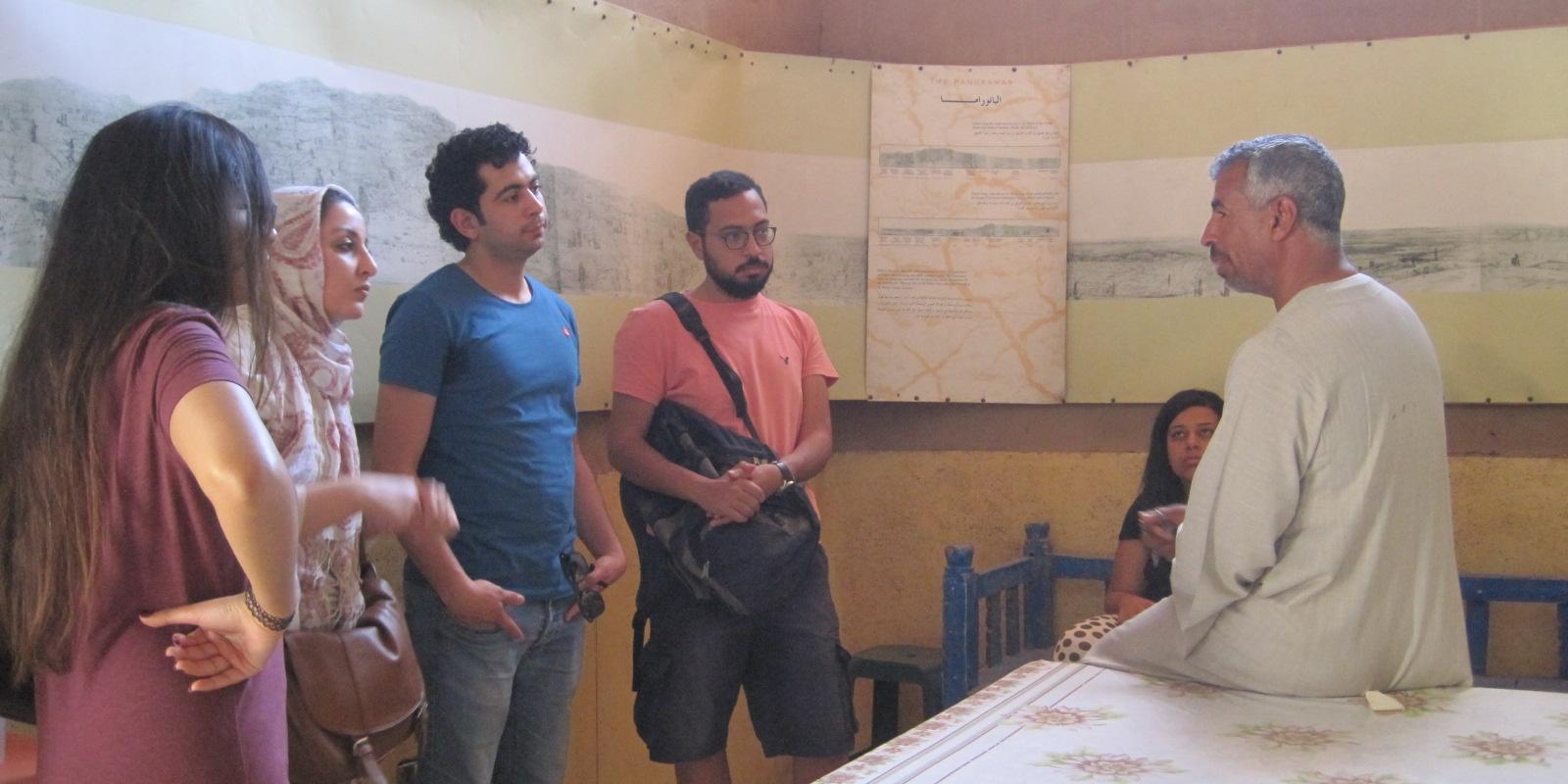
Preserving Qurna Through Oral History
AUC alumni and staff members have partnered with the Qurna History Project to collect oral histories from local residents of the Upper Egyptian town of Qurna, before their stories disappear forever.
“The interviews will form an important part of the Qurnawi’s history,” explained Caroline Simpson, director of the Qurna History Project. “The older people are dying, and young people will not know or remember life on the hillside – which was very special. Younger Qurnawi, and future generations, will learn what their parents and grandparents believed and did when living on the hillside. The multi-faceted history of the most recent inhabitants of the Theban Hills cannot be erased.”
Simpson has been collecting historical information and bringing visibility to the Qurna community since she started working there in the mid-90s. “I tried in vain for many years to get some organization to do oral history work and was delighted when AUC contacted me and that we worked together on this,” she said.
The project is in line with the continuous efforts by AUC's Rare Books and Special Collections Library to preserve local and international heritage. "By partnering with people and groups outside the University who are passionate about preserving Egypt's heritage, AUC's resources and expertise give an important boost to these efforts,” said Stephen Urgola, University archivist and director of records management at the Rare Books and Special Collections Library. “It also shows the major role students can have by contributing their enthusiasm, experience and diverse academic backgrounds. This is why the work-study program, where some of the interviewers were trained, is so important to the library."
AUC students spent two weeks in Luxor conducting about 70 audio interviews with former Qurna residents, aged approximately 50 to 90 years old (25 of whom were women), to document how life in Qurna was before their relocation from traditional homes. The interviewers included Germeen Riad, an MA student in community psychology; Habiba Al Awady (MA ‘16) in anthropology, Mina Ibrahim, another anthropology graduate, Sarah Wassef ‘16 in biology and Mohamed Farag, staff member in the Rare Books and Special Collection Library’s digitization laboratory.
The original settlement of Qurna was located on a hillside on the west bank of the Nile River at Luxor. The hillside location was positioned in the middle of the ancient Theban necropolis, one of the world’s most important archaeological sites, near modern-day Luxor. “The people lived in, on and around the Tombs of the Nobles and other tombs of many periods that are in the hillside near the mortuary temples, which all form part of this much visited World Heritage site,” explained Simpson.
In the 1940s, the government attempted to move the residents to New Qurna, designed by Egyptian architect Hassan Fathy, but the people of Qurna strongly resisted. However, between 2006 to 2008, the government demolished hundereds of houses in the village and relocated the residents. Old Qurna is now uninhabited and approximately 15,000 to 18,000 Qurnawis now live in the three settlements of As-Siyul, Gobawi and New Qurna, about five to eight kilometers to the north on the edge of the desert.
Simpson has worked with local residents and raised money for exhibitions and, together, they restored a group of old Qurnawi houses as a free exhibition Center; but they were all demolished in 2009. She explained that much of the documented evidence of Qurna’s history remains outside of the town, or has not been recorded at all. “I have tried to remedy that,” she declared. “Even though their wonderful houses are no longer on the hillside, there is still work to do, and the Oral History Project was an important part of that.”
During her time at AUC, Wassef worked for the University on the Square: Documenting Egypt's 21st-Century Revolution project and did AUC-related oral histories. She pointed out that oral histories are particularly valuable because they provide an unbiased view of individual experiences. “Oral histories are very important compared to any type of written history because you can hear the story directly from the person, and it wouldn’t involve any interpretation of the writer,” she explained. “With oral histories there is no third party between the person with the story and the listener as long as the interview is done in the right way.”
Wassef noted that she faced some challenges understanding the unique vocabulary of the Qurnawis. “It was sometimes hard to understand them, but that was also one of the most enjoyable parts of the job because they would define that terminology for me.” She recalled learning about the traditional folklore and mythology of the area’s residents. “One of the things that surprised me was the amount of superstition in the beliefs of those people and the eye-witness stories about spirits and the curse of the pharaohs,” she said. “Even the younger generation believes in those stories.”
Now, the oral histories, together with photos, ownership and position details of some 750 houses, will be available online for Qurna residents, researches and the public alike. “It will form a permanent, accessible record of an amazing, unique community and architectural heritage that has sadly been destroyed,” said Simpson.
The oral histories will also be available next year in the Rare Books and Special Collections Digital Library, with transcripts and audio interviews that can be streamed. “This is a good example of how the library is giving access to historical and cultural heritage resources to users worldwide, but it emphasizes the importance of investing in digital storage and oral history activities because there are so many voices we want to preserve, and so much we want to create to put online for the world to see and hear,” said Urgola.
